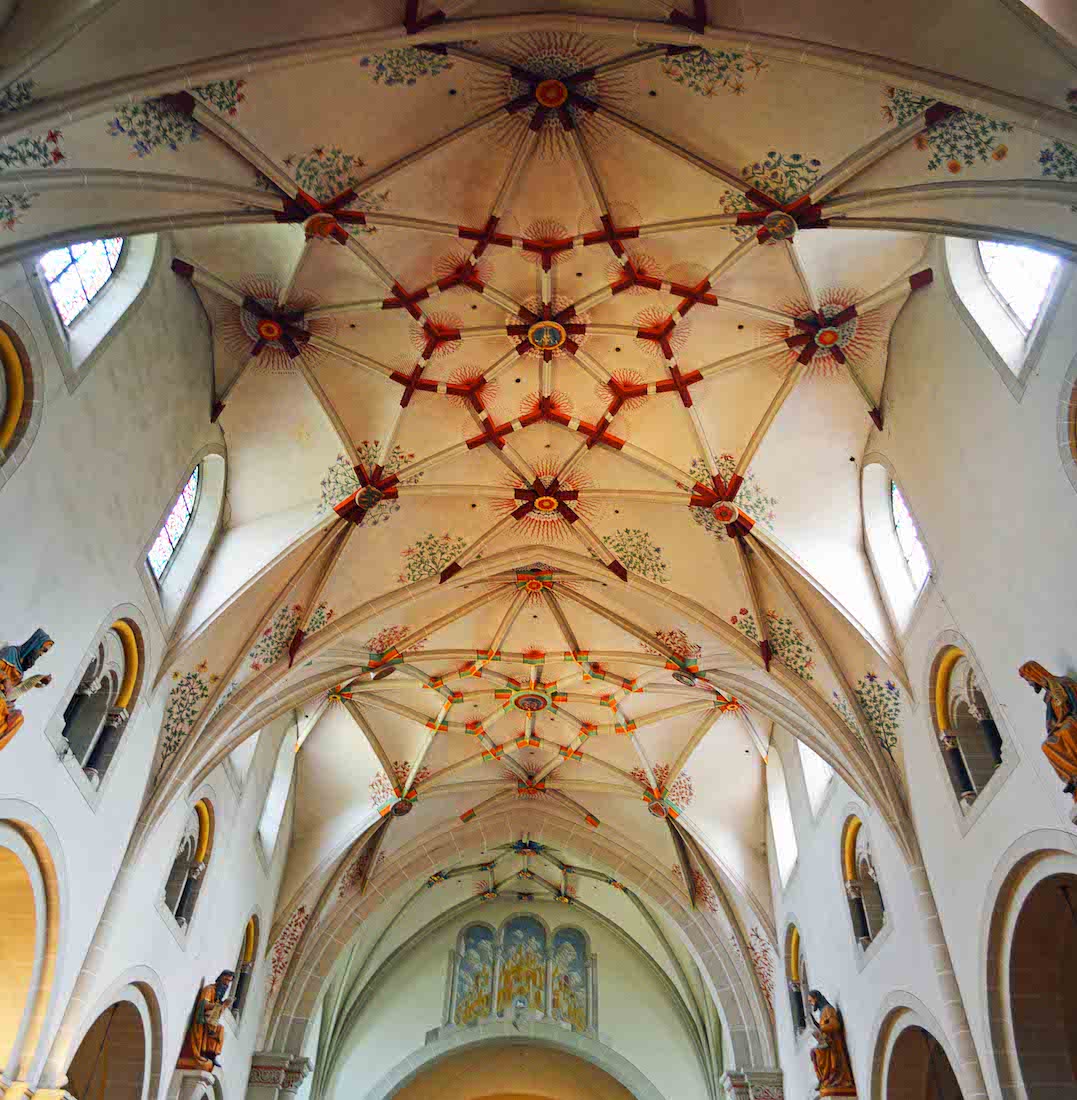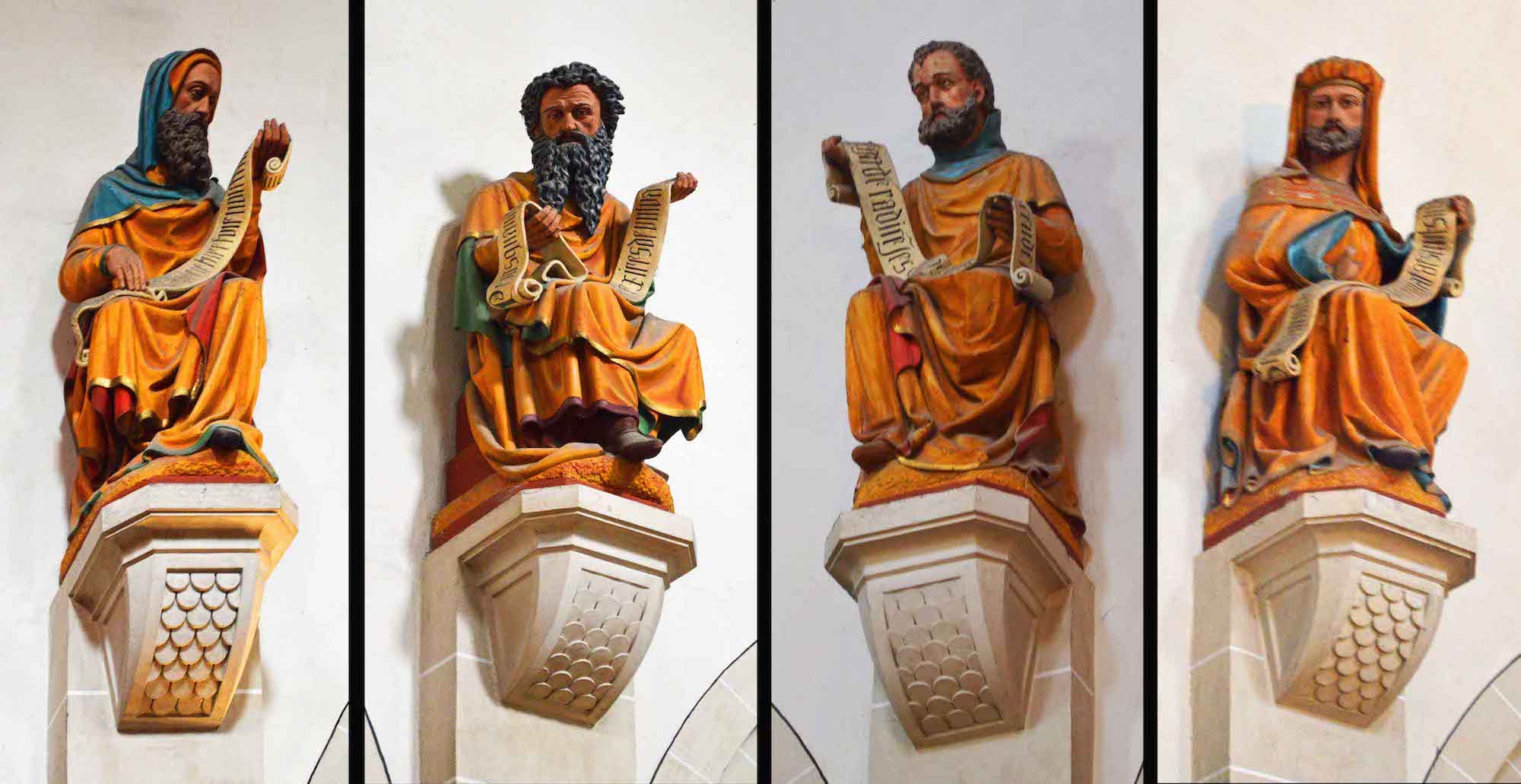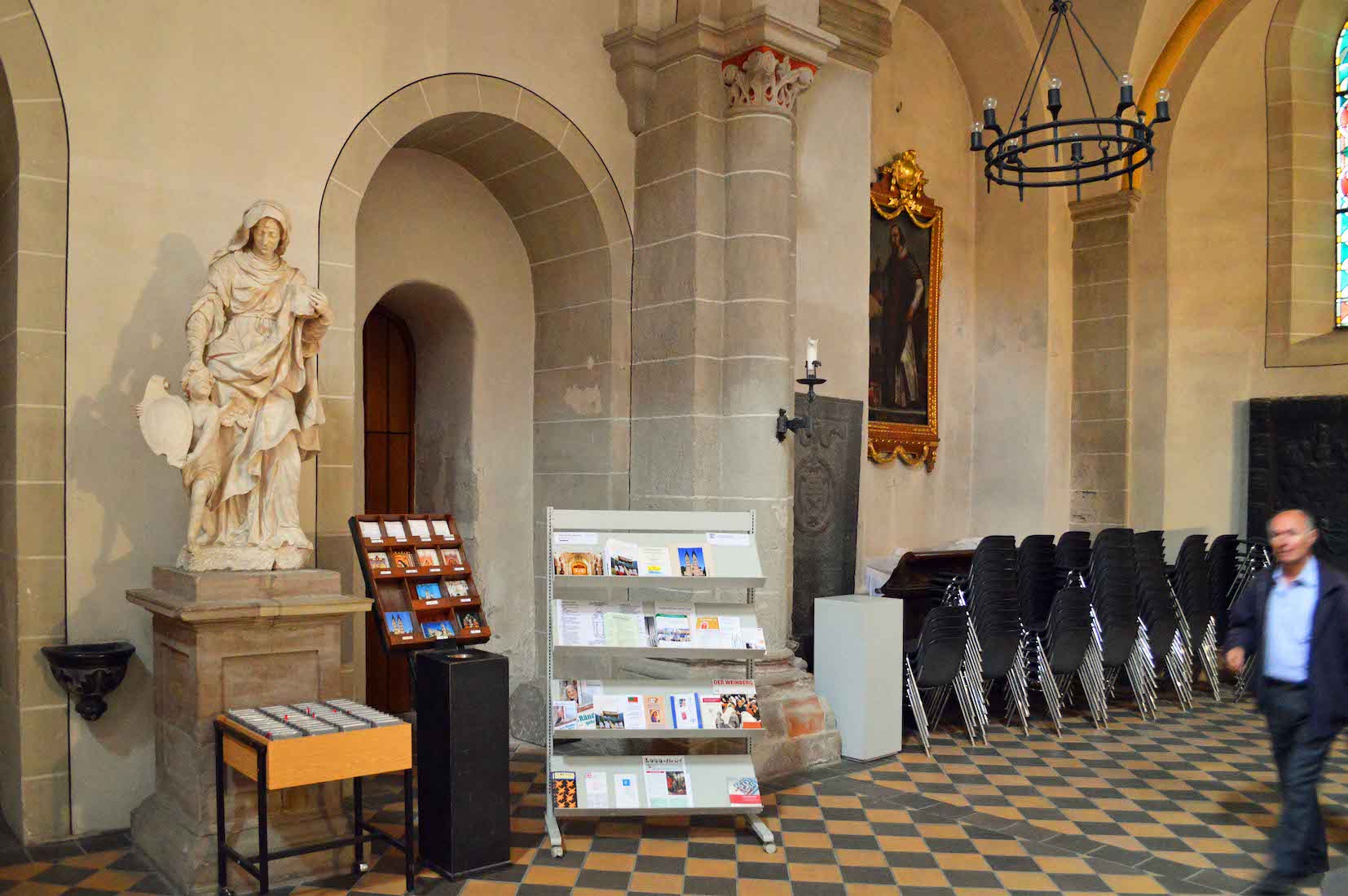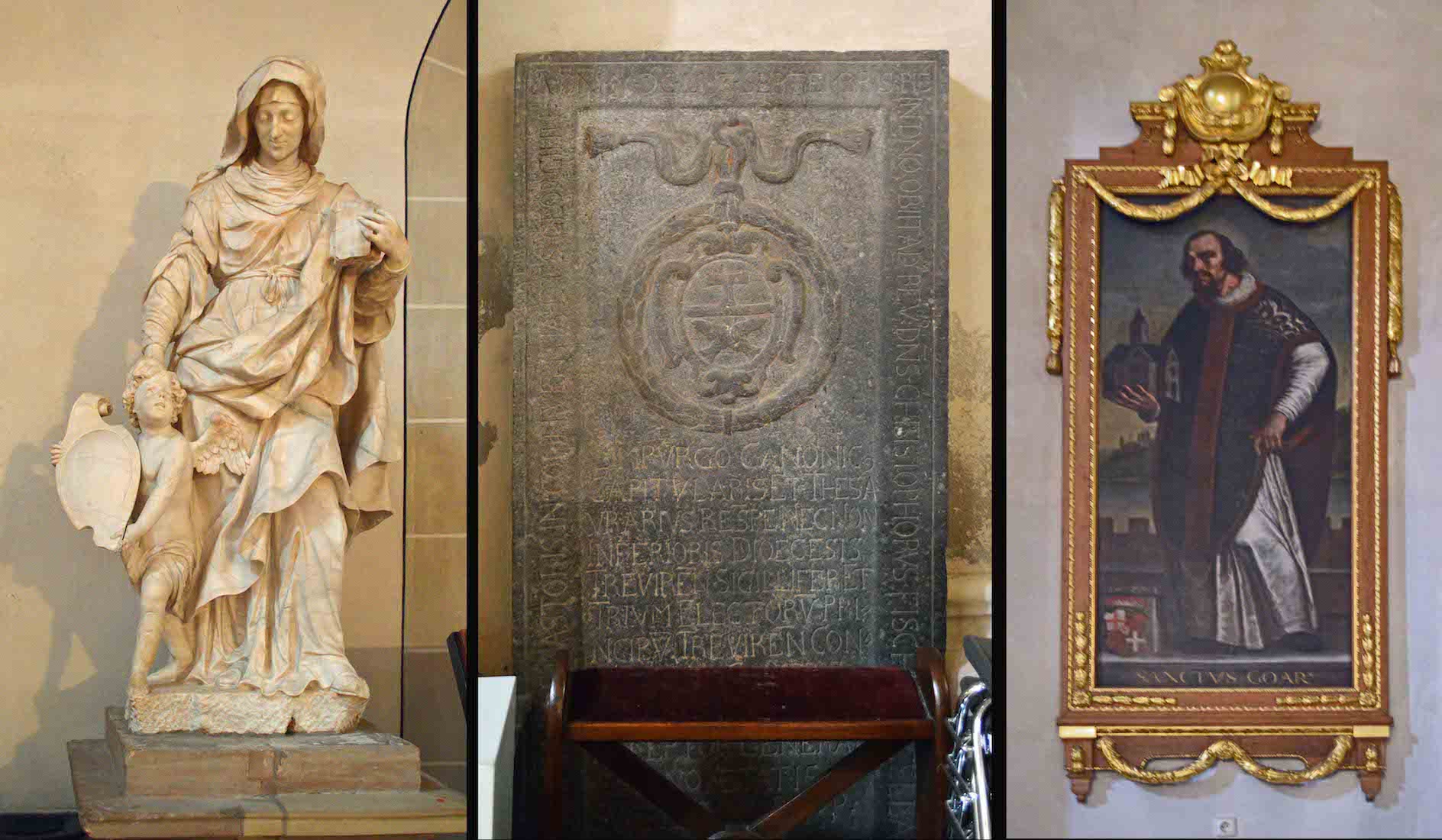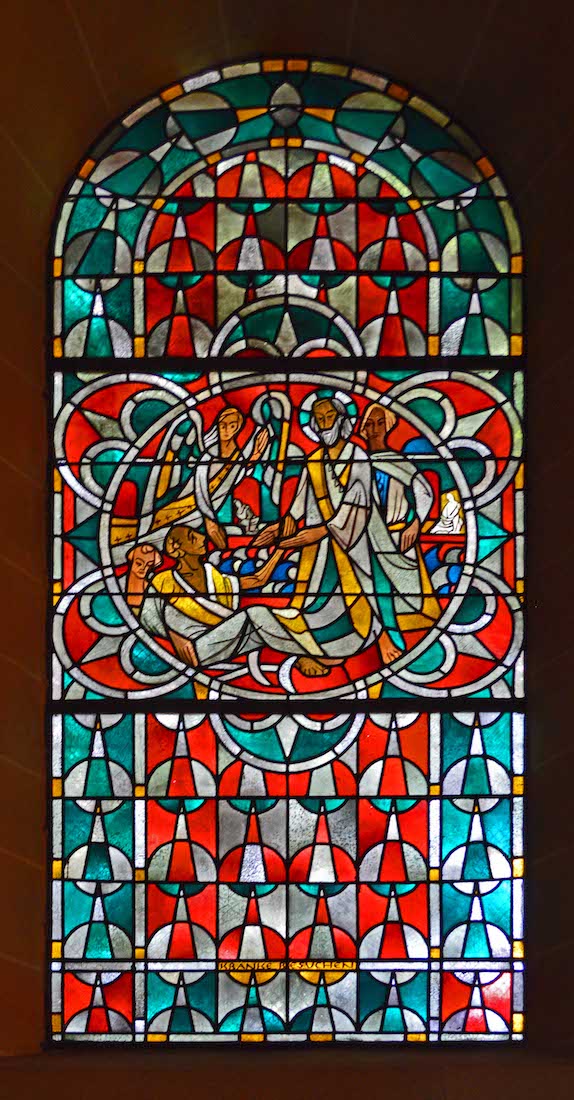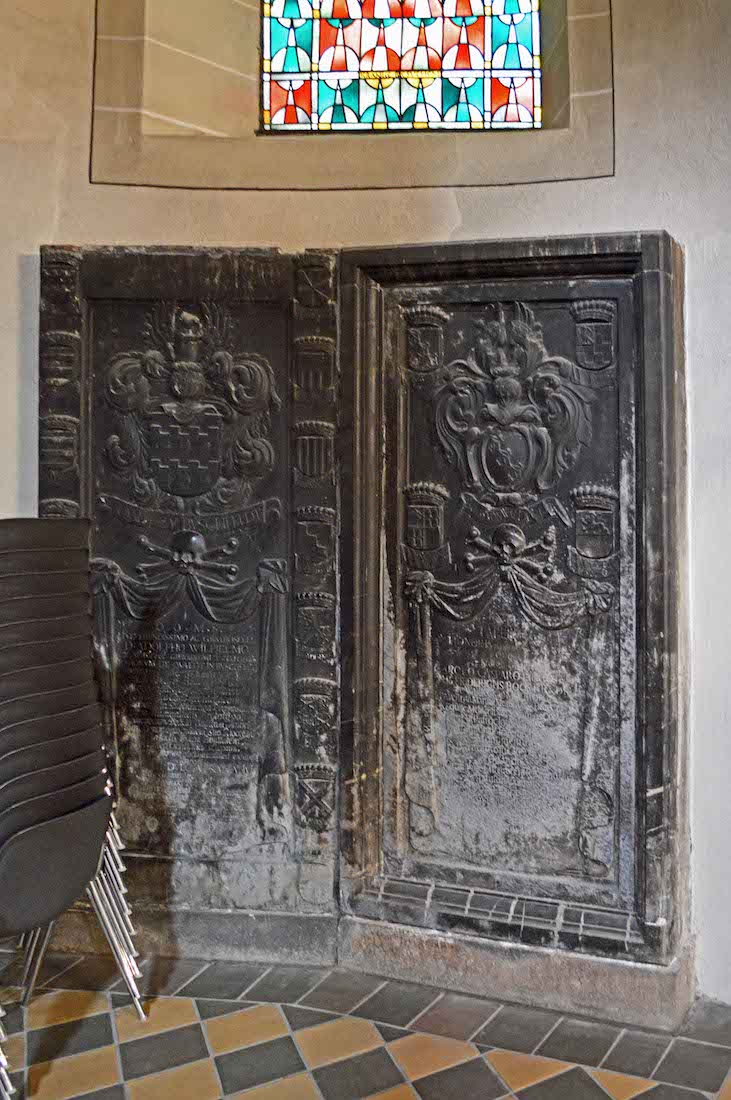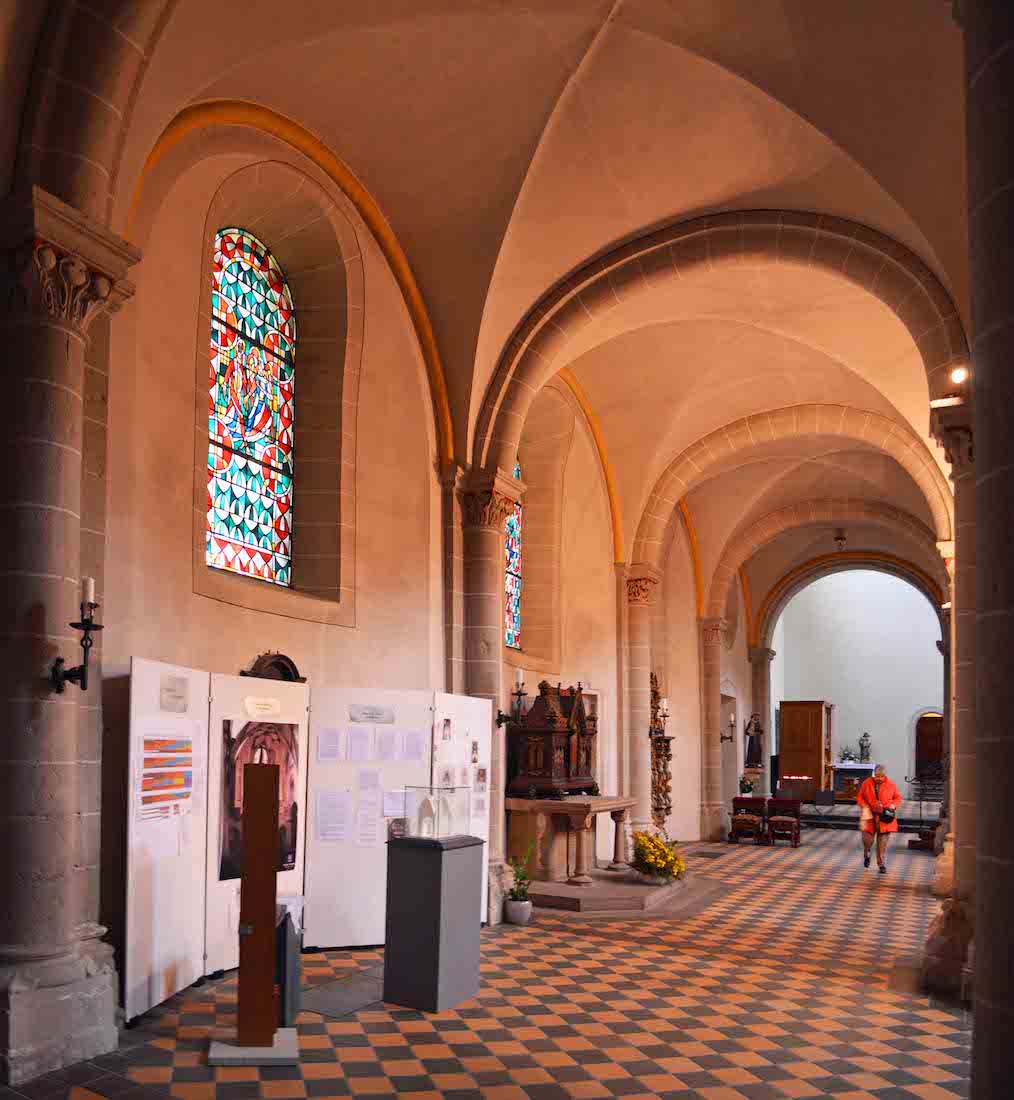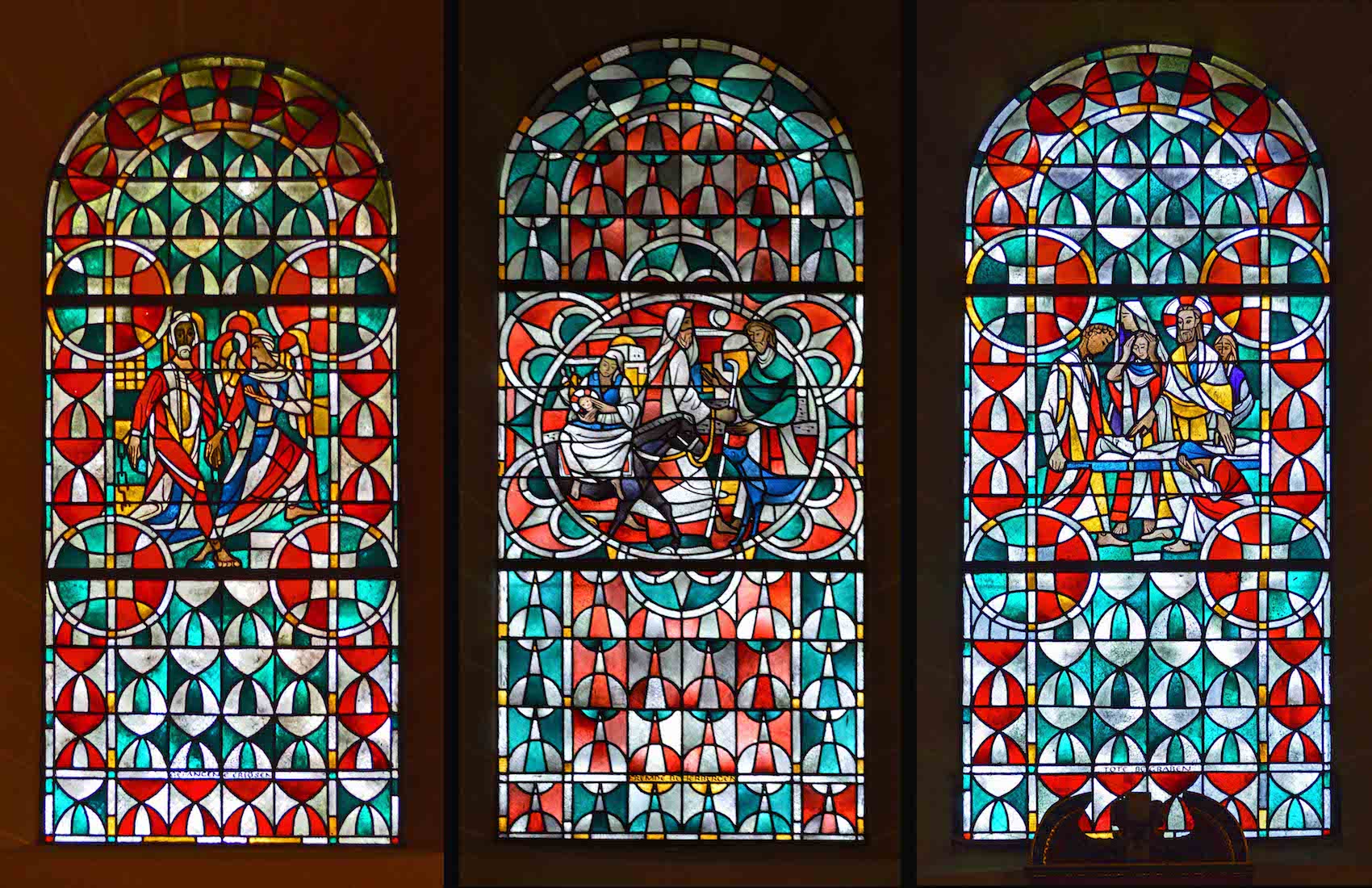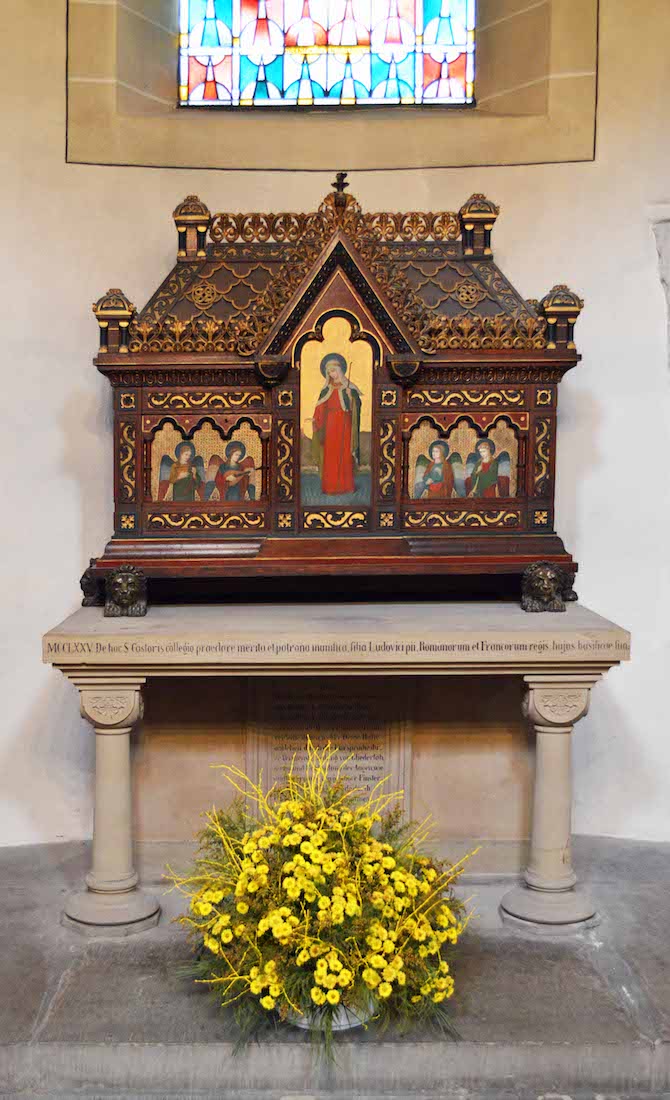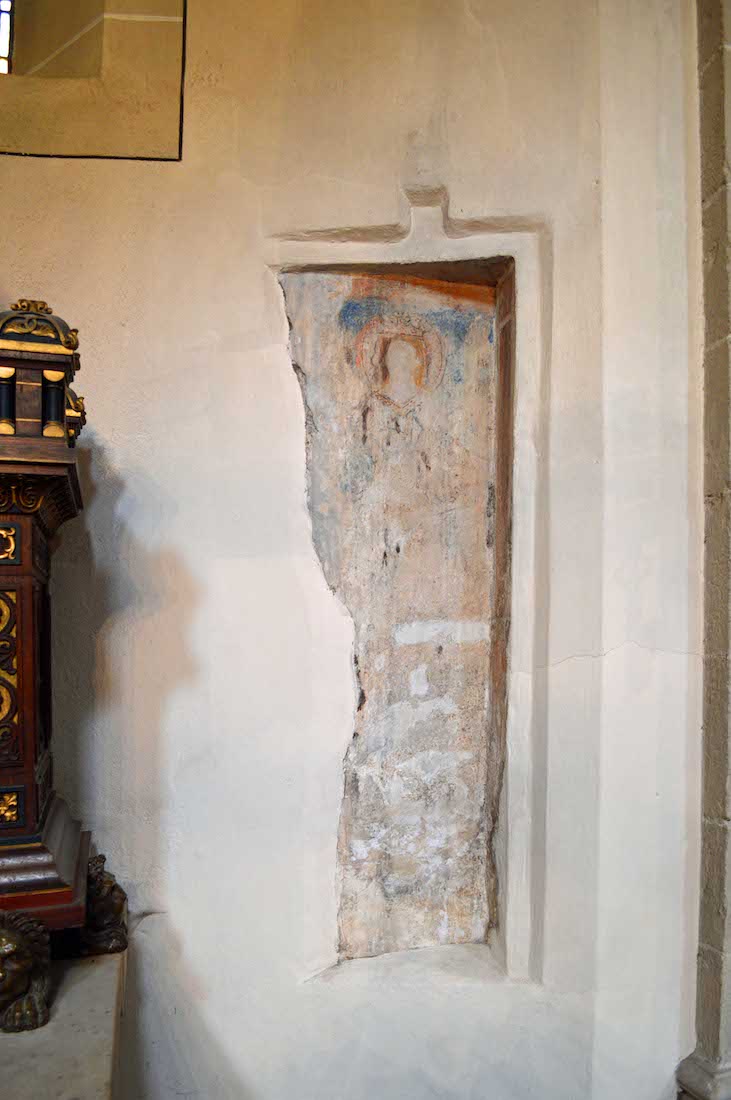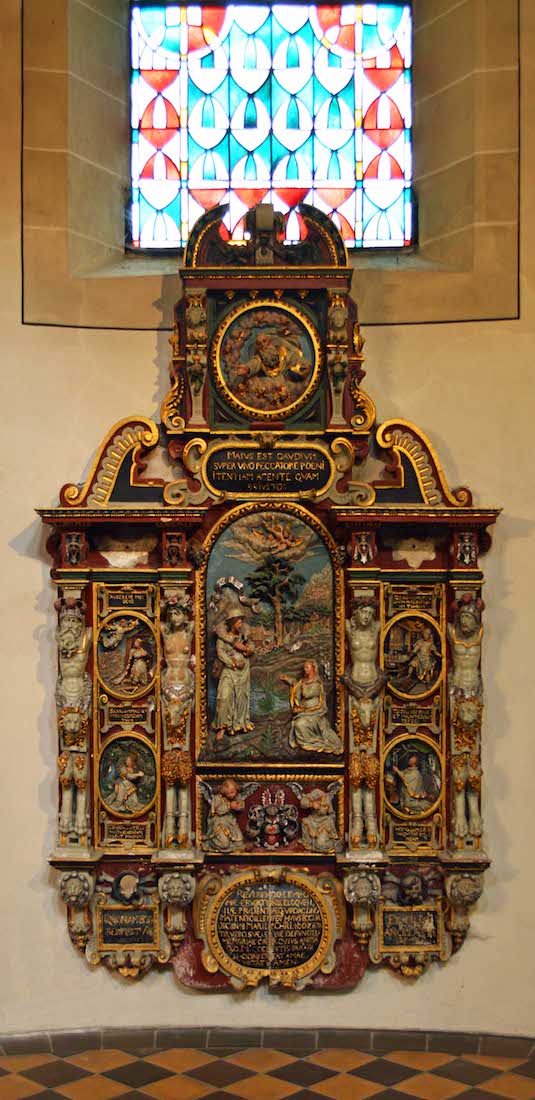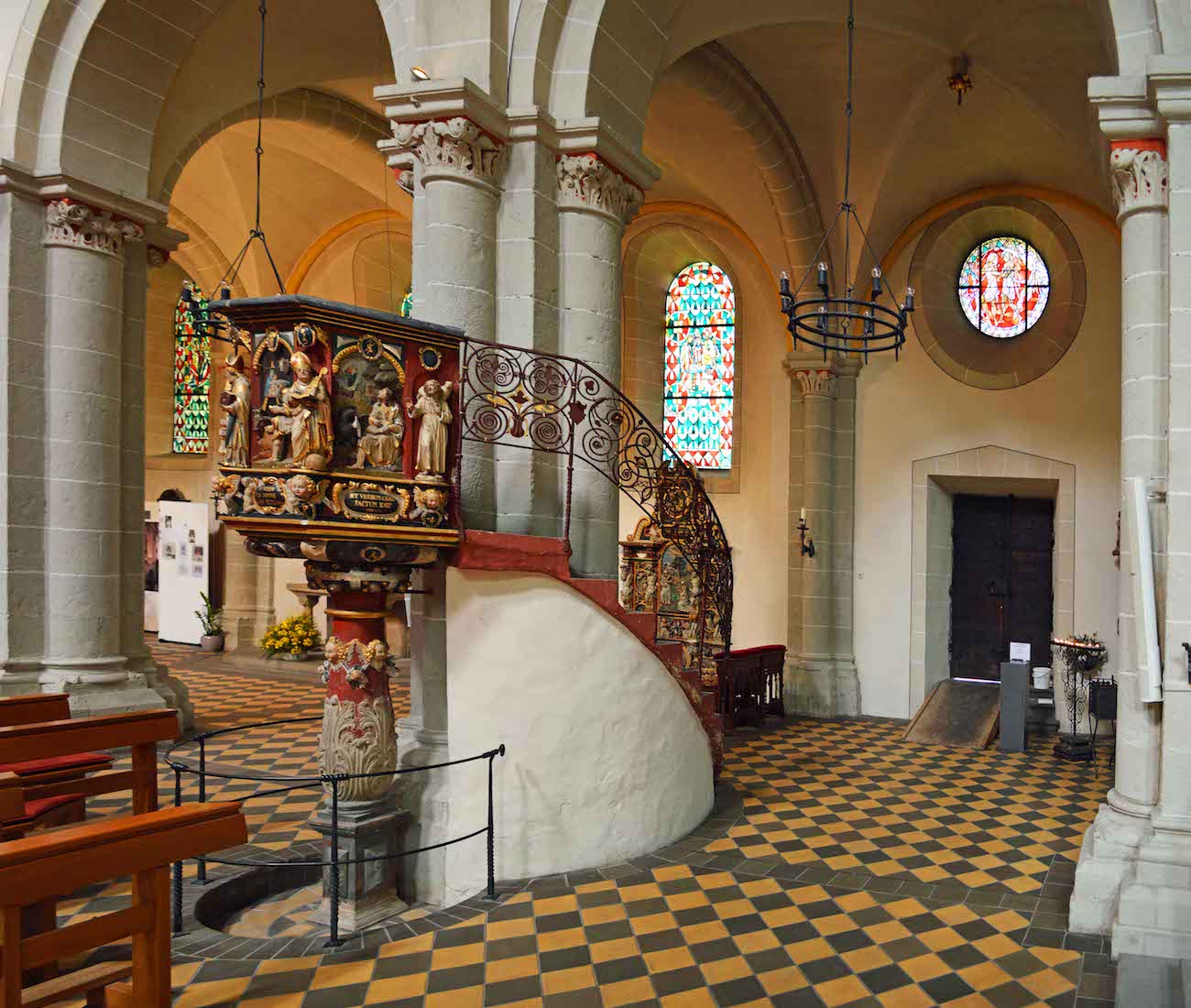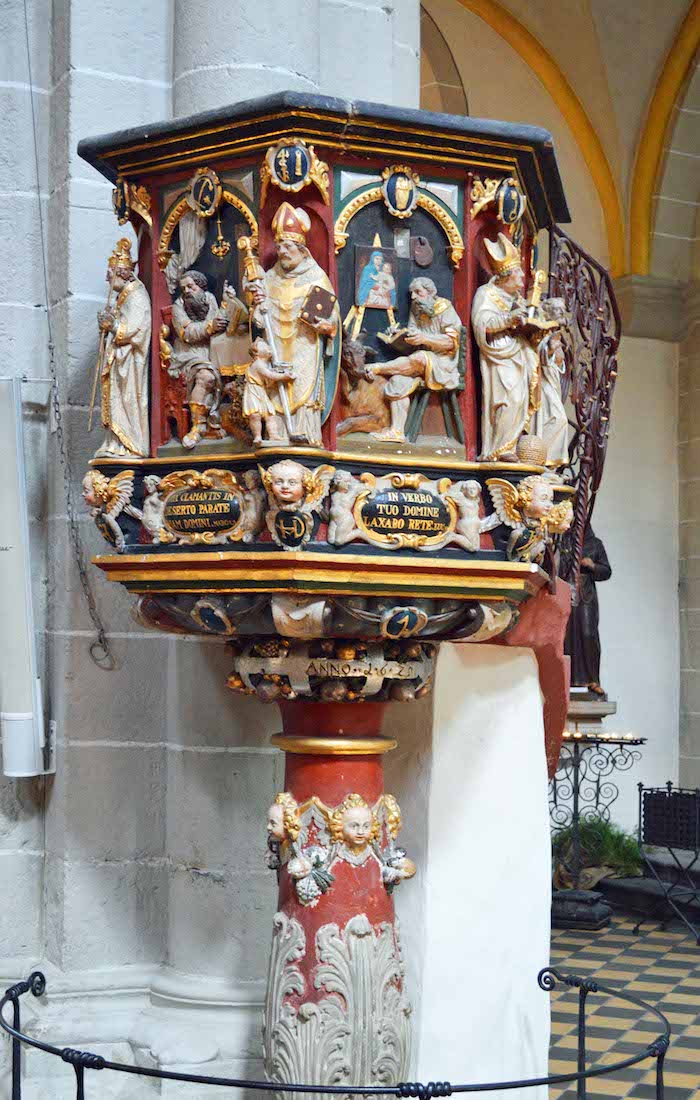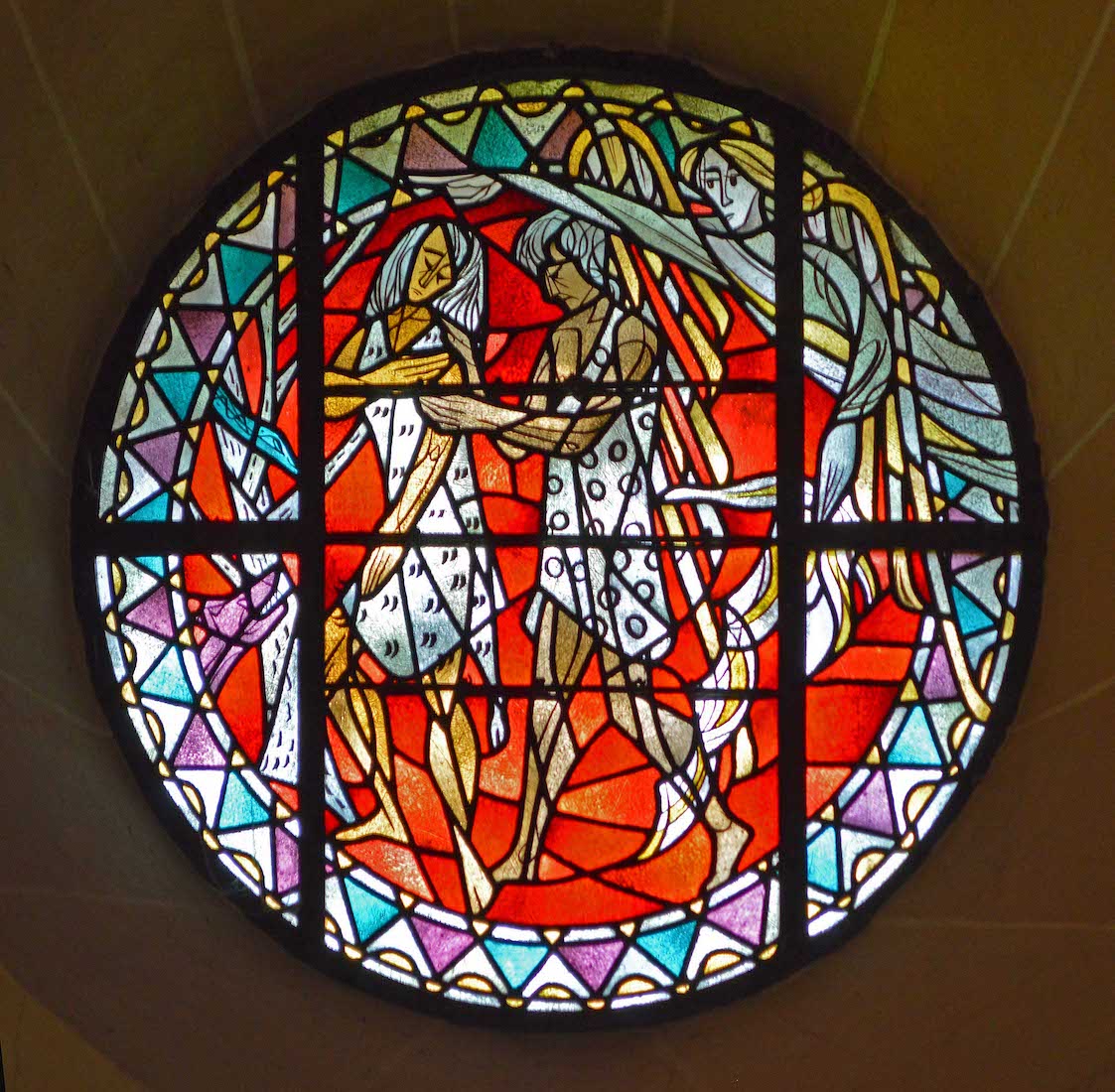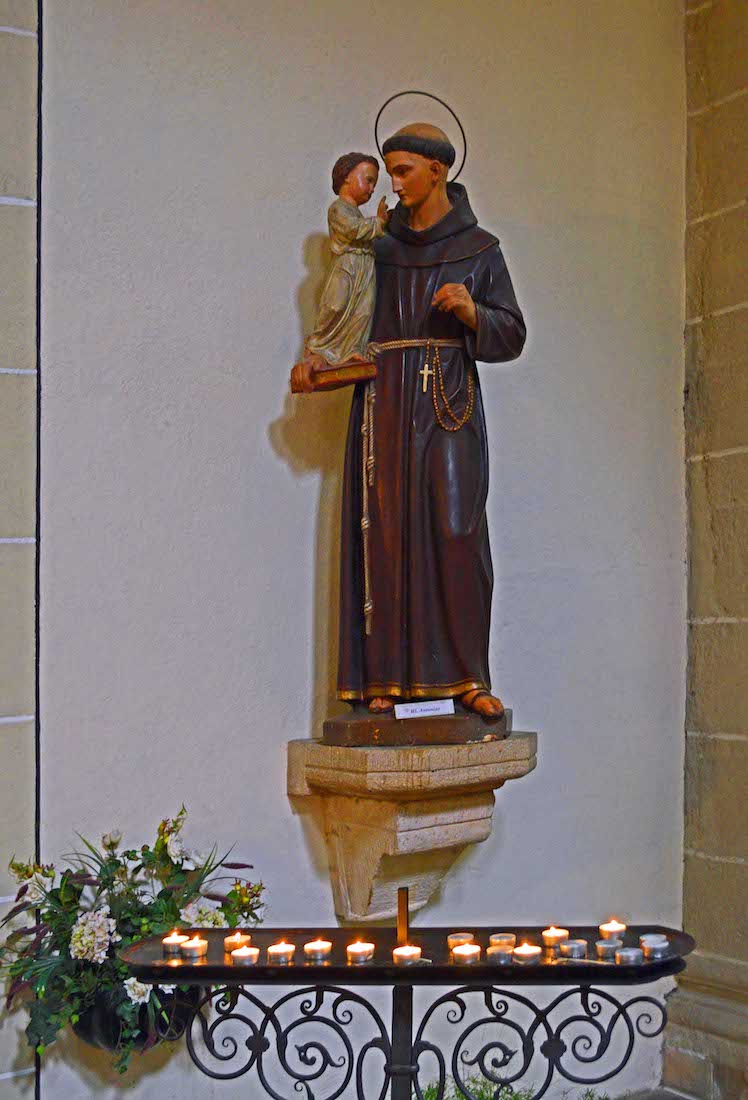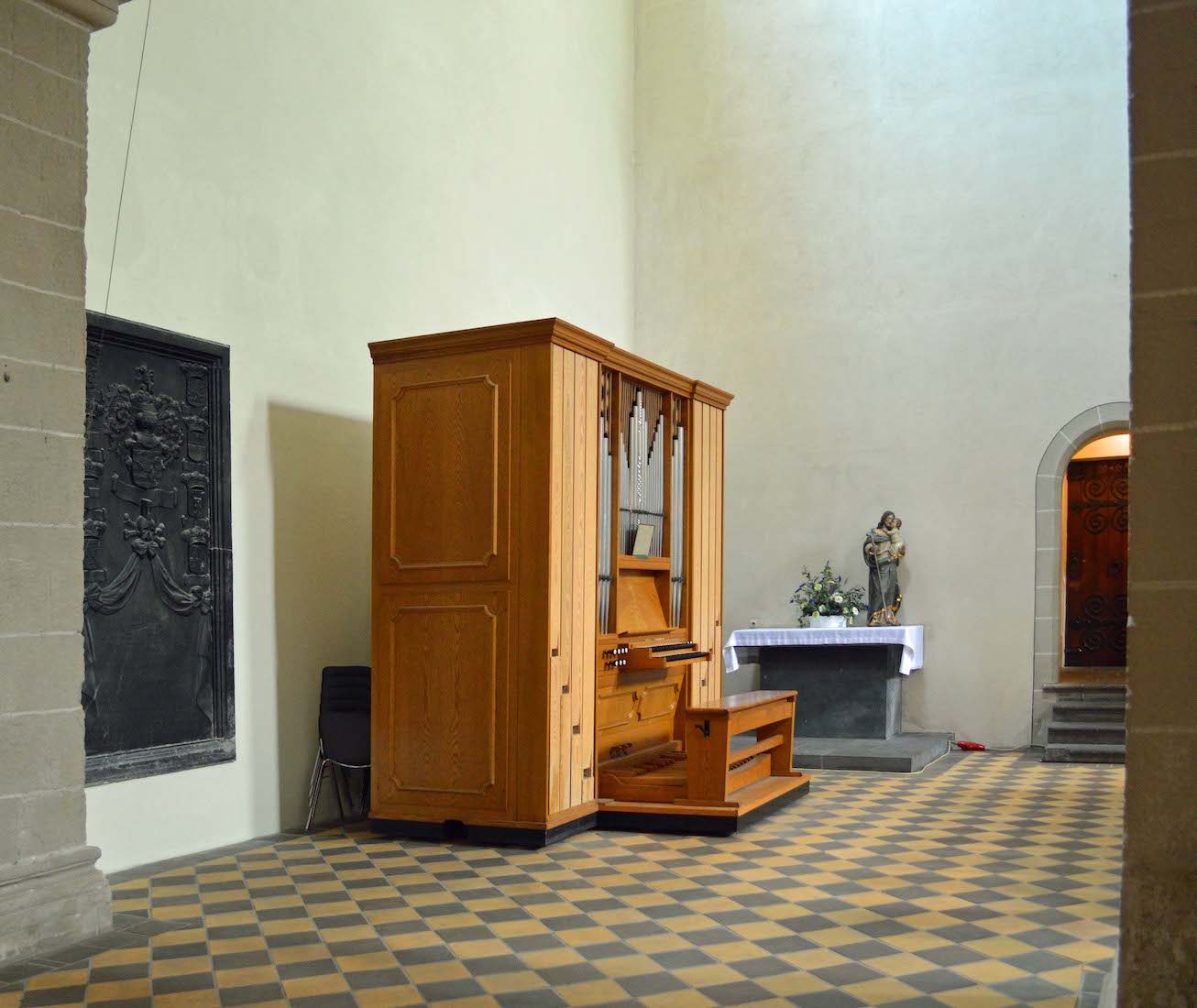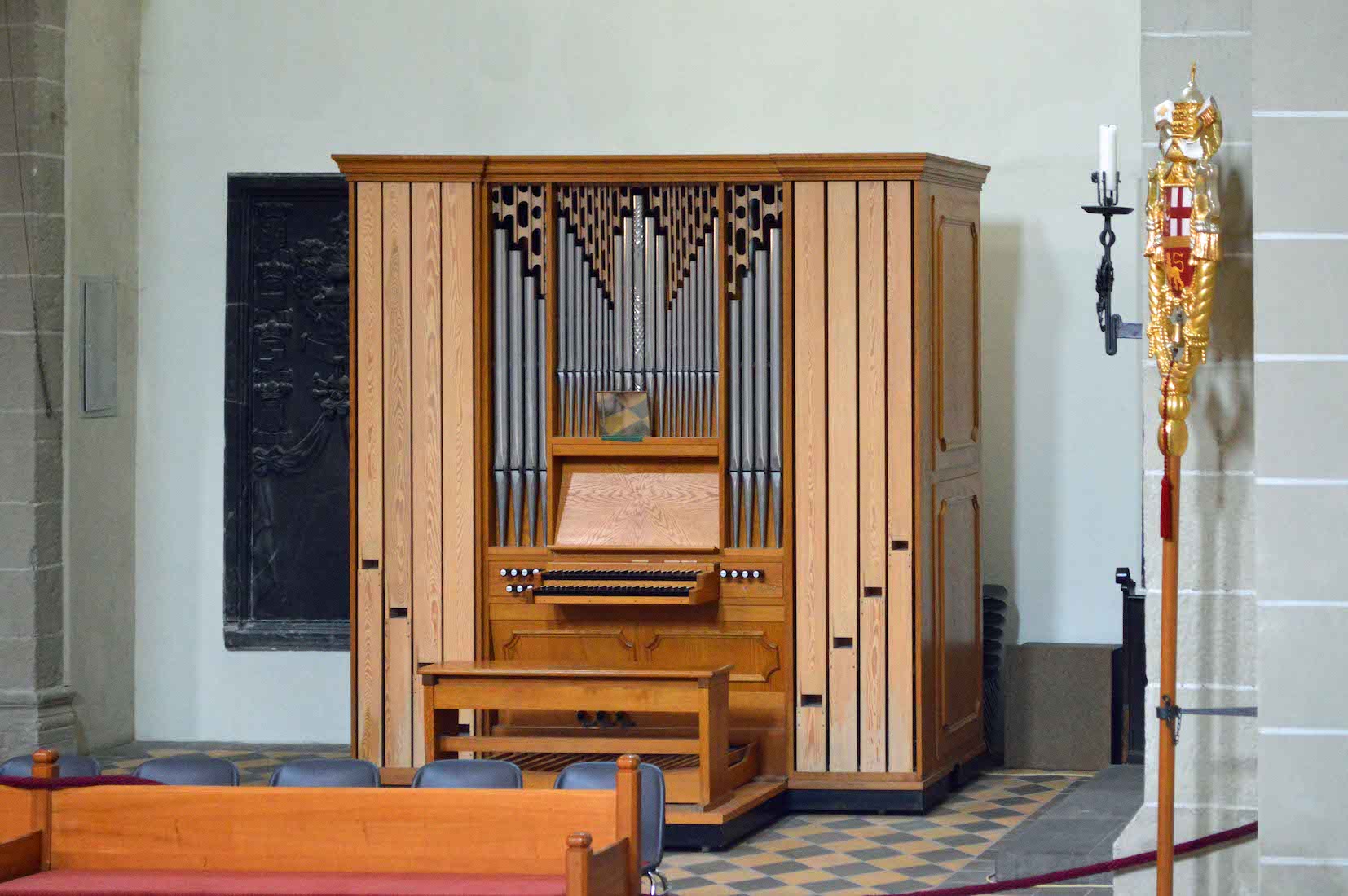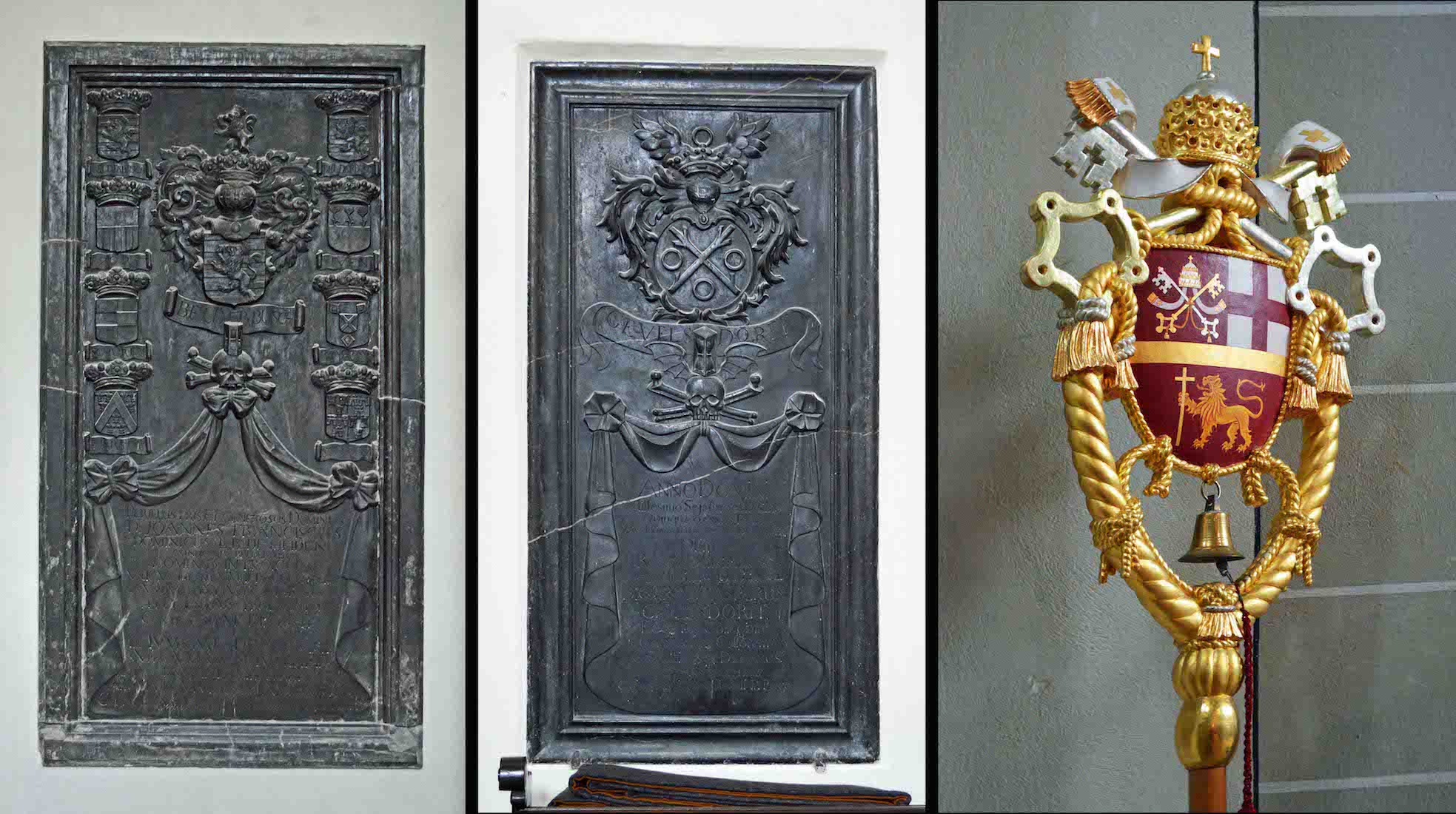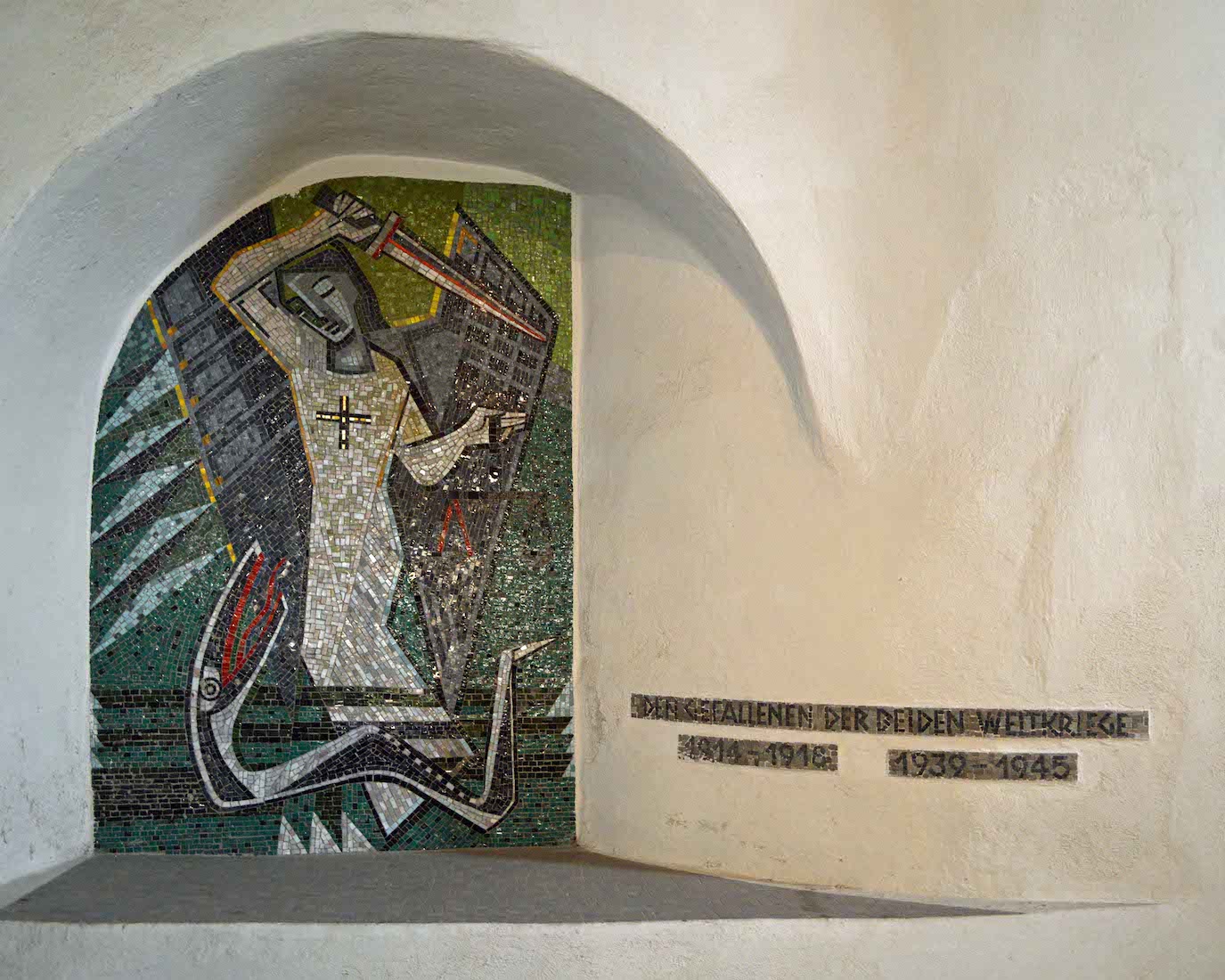
As we enter into the Basilica through the narthex, we pass this mosaic. It is a memorial to those who died in the two World Wars. PLAN
22. THE NAVE
The nave is magnificent! The Church is built as a nave with two aisles. These are separated by two rows of Romanesque arches. Above the arches is a small gallery, and there are clerestory windows above this. Four seated figures look down on the congregation. For future reference, we notice too that on the pillar across from the pulpit, there is a large crucifix.
23. NAVE VAULTING
From 1496 to 1499, vaulting was installed to replace the Romanesque roof. At the same time, two star vaults were erected in the nave and one above the altar. These are very spectacular. Various motifs are depicted on some of the keystones. Notice too the ‘New Jerusalem’ artwork above the sanctuary arch.
24. FOUR PROPHETS
Above the nave and looking down are four carved figures, each holding a text scroll. These represent ‘the four great prophets of the Old Testament’, and date from 1858. Other sources list these (in some order) as Isaiah, Jeremiah, Ezekiel and Daniel.
25. WEST NAVE
We begin our exploration of the interior of the Basilica by looking at the North side of the West wall. We notice a statue by the entry door, a headstone and a painting. At extreme right is a stained glass window with a couple of headstones beneath.
26. STATUE, HEADSTONE, PAINTING
This statue by the entry door is of Anne, supposed mother of the Blessed Virgin. The central headstone is one of many in and around the Basilica. The inscription is fairly clear and could be translated by an enthusiastic viewer! The 1627 painting at right is of St Goar. Goar came as a young monk from Aquitaine in SW France and at first lived as a hermit in a cave on the Rhine. With leave from the Bishop of Trier, he worked as a missionary to the local people. He was well known for his great hospitality, particularly towards the Rhine boatmen. Later he built a hospice and a chapel. After his death, about 575, Goar’s grave became a pilgrimage site and the place was named after him.
27. NAVE WINDOW
The windows in the Basilica have a common style and colouring. They date from 1952 – 1956 and were designed by Alois Stettner. Here Jesus heals a cripple. Near the bottom of the window is the explanation ‘kranke besuchen’ or ‘visiting the sick’.
28. HEADSTONES
The text on these headstones is not very legible, but the headstone at left appears to be that of Adolpho Wilhelmo.
29. NAVE NORTH AISLE
This is a preview of our exploration along the nave North aisle. We notice the colourful windows and the items beneath, further along, a round window with a statue below, and beyond that a large box organ.
30. NAVE NORTH WINDOWS
Along this aisle are a further three windows in a similar style. These show from left: Jesus setting the prisoner free (Gefangener Erlösen); Joseph, Mary and the baby Jesus leaving the inn (Fremde Beherbergen = foreign accommodation!); Jesus raising the dead (Tote Begraben = bury the dead).
31. RELIQUARY OF THE BLESSED RIZZA
Under the third of the nave North windows stands an altar and reliquary dating from 1894. This commemorates Rizza, the alleged daughter of Louis the Pious, who is venerated in the church as a saint of the city of Koblenz.
32. OLD AND NEW
A little further along this wall, next to the shrine, a small section of the older construction has been left uncovered. This bears a late Gothic fresco which was just recently discovered.
33. TABLEAU
This elaborate monument is described as the Tomb of the Deacon Maternus Gillenfelt. It is an early gothic piece by the sculptor Sebastian Sparmeyer(?). The piece is divided lengthwise by four caryatids (the tall narrow female figures).
34. PULPIT
An elaborate pulpit stands at the front of the nave. The pulpit dates from 1625, and is formed from four sides of a hexagon. On the sides are free-standing figures of the Good Shepherd, and four of the early Church fathers: Augustine, Hieronymus, Ambrose and Gregory the Great. A tiled walkway leads from North to South between nave and crossing, connecting the side doors. This view looks North to the round window of the ‘North transept’.
35. PULPIT DETAIL
The reliefs between the free-standing figures depict the Four Evangelists with their symbols, and 19 coats of arms, which are most likely those of the founders or canons. Below, the nearest text translates to: ‘At your word, I will let down the net’ (Luke 5:5) – a rather apt verse for a pulpit.
36. ROUND WINDOW
Above the North door, this colourful round window, shows Adam and Eve being ushered out of the Garden of Eden after the Fall.
37. ST ANTHONY
St Anthony of Padua stands close by the round window, holding the young Jesus as in a popular legend. Anthony was a Portuguese Catholic priest and friar of the Franciscan Order. He was born and raised by a wealthy family in Lisbon and died in Padua, Italy. With his forceful preaching and expert knowledge of scripture, he was the second-most-quickly canonized saint after Peter of Verona. He is also the patron saint of finding things or lost people.
39. ANOTHER VIEW
From this angle we see again the tablet at left, the organ, and in the foreground at right, a gold crest. The small choir organ was bought in 1990. The main Basilica pipe organ was previously installed in this space, with this small organ below.
40. TABLETS AND CREST
The left headstone belongs to the Belderbusch family, and near Koblenz today there is a Graf Belderbusch restaurant. The second memorial carries the name Gevelsdorff – another old German family. The crest contains the Papal crossed keys, the coat of arms of the Holy See (top left) and the bell (tintinnabulum), celebrating the basilica status of St Castor’s.



